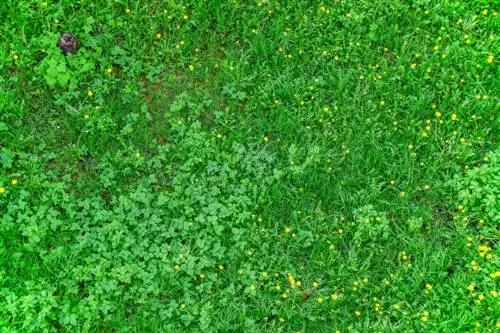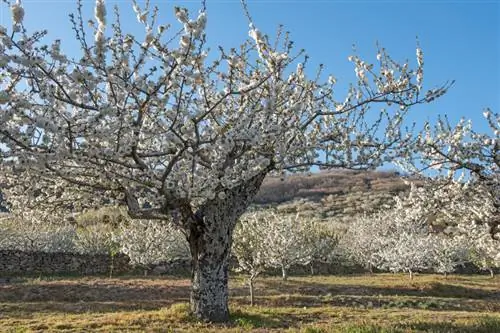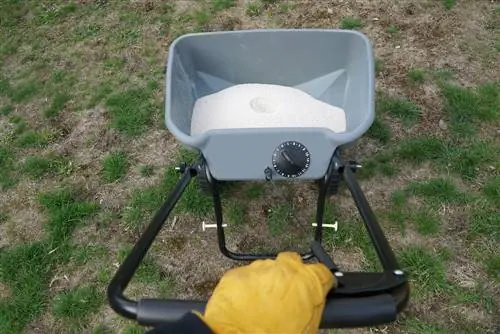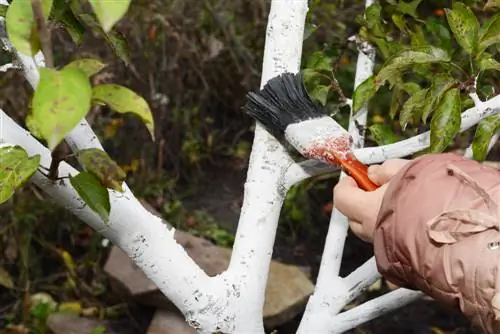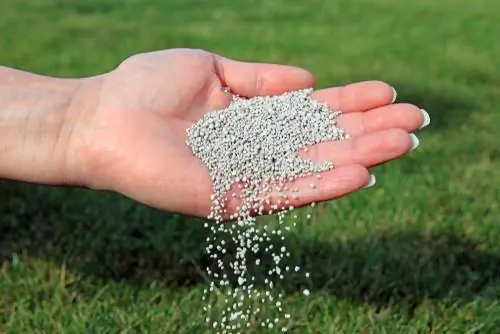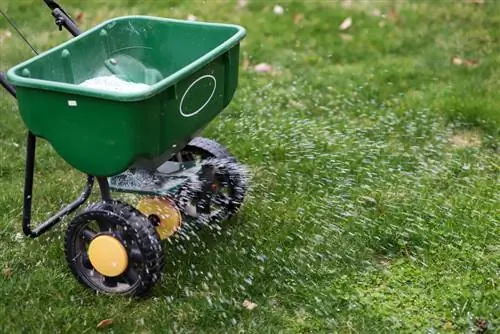- Author admin [email protected].
- Public 2023-12-16 16:46.
- Last modified 2025-06-01 06:02.
Meadows are man-made biotopes that cannot be left to their own devices. Instead, they need care - more or less depending on the type of meadow - so that the diversity of species growing on them continues to thrive. For some types of meadows, adequate care also includes liming.
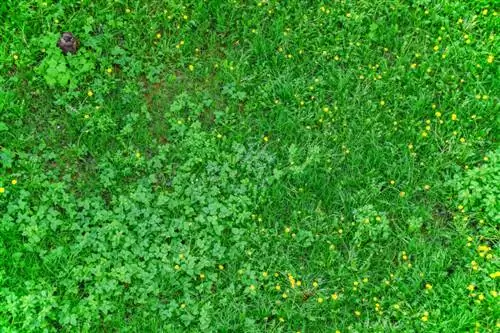
Why and when should you lime a meadow?
Meadows should be limed in order to improve acidic soils and to preserve the diversity of plants. Liming is particularly useful in dry and poor meadows. It should be carried out every two to three years in spring or autumn.
Why should you lime meadows?
Liming ensures that soils that are too acidic are improved. If the pH value of the soil drops into the acidic range, the meadow plants can no longer grow and are displaced by other plants that are used to more acidic soils. Dry and poor meadows in particular require liming, although you should not lime on a whim, but rather determine the actual need based on a soil sample. So-called indicator plants such as field horsetail, sorrel, wild pansies and, above all, moss provide the first indication of a need for lime. If, on the other hand, you can mainly find dead nettles, stinging nettles or shepherd's purse in your garden, this is an indication of a rather alkaline soil with a high pH value.
Caution: Don't lime every meadow
Not every meadow is allowed to be limed, as some habitats are permanently disturbed by this measure. The ban applies in particular to all wet and swampy meadows, because the more boggy subsoil needs an acidic pH value so that the plants that are specifically adapted to these environmental conditions can thrive. Liming, on the other hand, is particularly useful on poor and fat meadows as well as on agriculturally used meadows.
When and how is limewashed?
Liming is carried out approximately every two to three years, preferably in spring or autumn. If fat meadows are limed, no animal fertilizer such as manure etc. may be applied at the same time. Otherwise the nitrogen will not end up in the soil but will simply escape into the air. Depending on the type of lime used, the treated meadows may not be grazed for at least four weeks - depending on the frequency of rain - in order to avoid poisoning the animals. However, this only applies to quicklime, which is also known as quicklime.
What types of limestone are there?
Basically there are three different types of lime. Carbonated lime is the gentlest because it only releases the active ingredients very slowly. With this lime, overcalcification is virtually impossible. Although caustic or quicklime works much more quickly, it is not recommended for home gardens due to its corrosive effects on people, animals and plants. In addition to the two types mentioned, there is also mixed lime, which - depending on the type and supplier - can be composed in very different proportions.
Tips & Tricks
As with liming, when it comes to fertilizing meadows, not every meadow should be fertilized. Poor meadows in particular should be fertilized little or not at all due to the delicate ecological balance.

